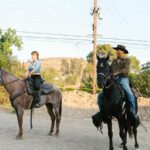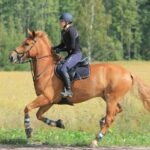Horseback riding offers therapeutic benefits that extend far beyond recreation for individuals with physical disabilities. Equine-assisted therapy and adaptive riding programs have gained recognition for improving balance, coordination, muscle strength, and emotional well-being. However, choosing the right equine partner is crucial for success. Not all horse breeds are equally suited for riders with physical limitations. The ideal horse should possess a gentle temperament, predictable movements, appropriate size, and exceptional patience. This comprehensive guide explores the best horse breeds for riders with various physical disabilities, offering valuable insights for those seeking the perfect equine companion for therapeutic riding or personal enjoyment.
Understanding Therapeutic Riding and Its Benefits

Therapeutic horseback riding, also known as equine-assisted therapy, provides numerous physical and psychological benefits for individuals with disabilities. The rhythmic movement of a horse mimics the human walking gait, which helps improve core strength, posture, balance, and coordination in riders with mobility challenges. Beyond physical benefits, the bond formed between horse and rider can enhance confidence, communication skills, and emotional regulation. Research has demonstrated that therapeutic riding can significantly improve quality of life for people with conditions such as cerebral palsy, multiple sclerosis, spinal cord injuries, and developmental disabilities. A 2021 study published in the Journal of Alternative and Complementary Medicine found that participants in equine therapy programs showed marked improvements in gross motor function and psychological well-being after just twelve weeks of regular sessions.
Key Characteristics to Look for in Therapy Horses
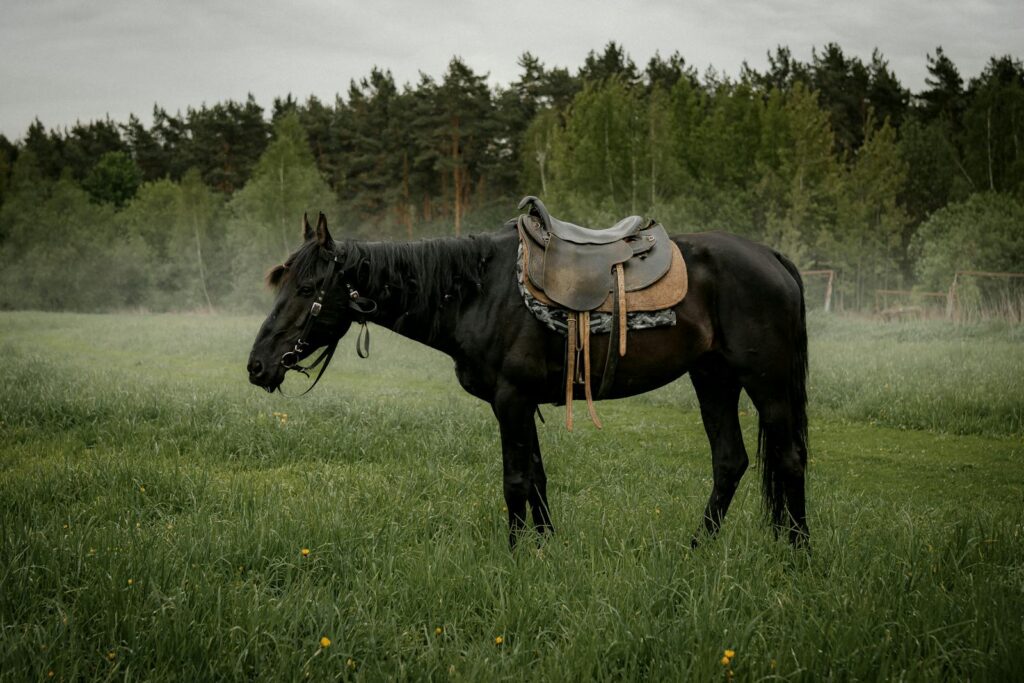
The ideal horse for riders with physical disabilities must possess specific qualities that ensure both safety and therapeutic effectiveness. Temperament ranks as the most critical factor—horses should remain calm and unflappable in unpredictable situations, demonstrating patience with unbalanced riders or unexpected movements. Physical characteristics matter significantly; horses should have smooth, rhythmic gaits that transfer therapeutic movement to the rider without jarring or excessive bouncing. The horse’s conformation (body structure) should include a wide back that provides stability and comfort, especially for riders who may use adaptive equipment. Age and experience are also important considerations, with many therapeutic riding programs preferring mature horses (8-20 years) who have accumulated life experience and established reliable behavior patterns. Additionally, the horse should demonstrate a willingness to accept different handling approaches and adaptive equipment that might be necessary for disabled riders.
American Quarter Horse: Versatility and Reliability
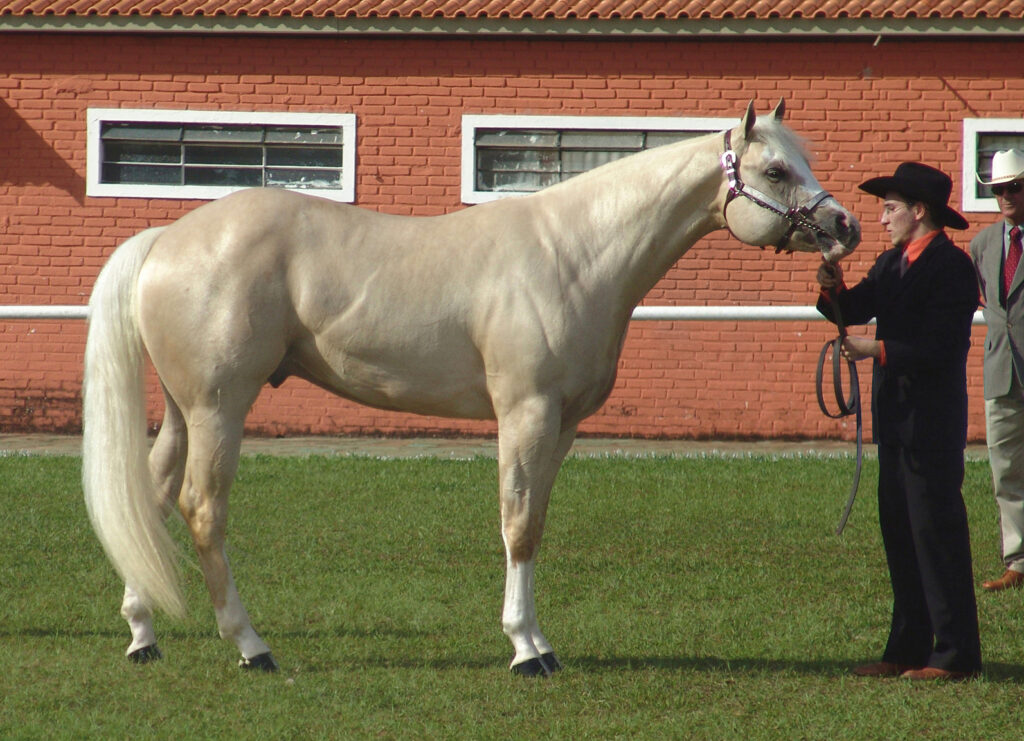
The American Quarter Horse stands as one of the most popular breeds for therapeutic riding programs nationwide due to its exceptional versatility and dependable nature. Known for their intelligence and trainability, Quarter Horses typically possess a willing disposition that makes them responsive to riders with limited physical capabilities. Their naturally balanced conformation provides stability, while their moderate size (typically 14.3-16 hands) makes mounting and dismounting more manageable for riders who use mobility aids. Quarter Horses generally exhibit smooth, comfortable gaits that minimize jarring movements, which is particularly beneficial for riders with conditions affecting muscle tone or joint sensitivity. Their stoic temperament means they rarely spook at unexpected stimuli—a crucial safety feature when working with riders who may make sudden movements or use adaptive equipment that could startle more sensitive breeds.
Norwegian Fjord: Sturdy Build and Gentle Nature
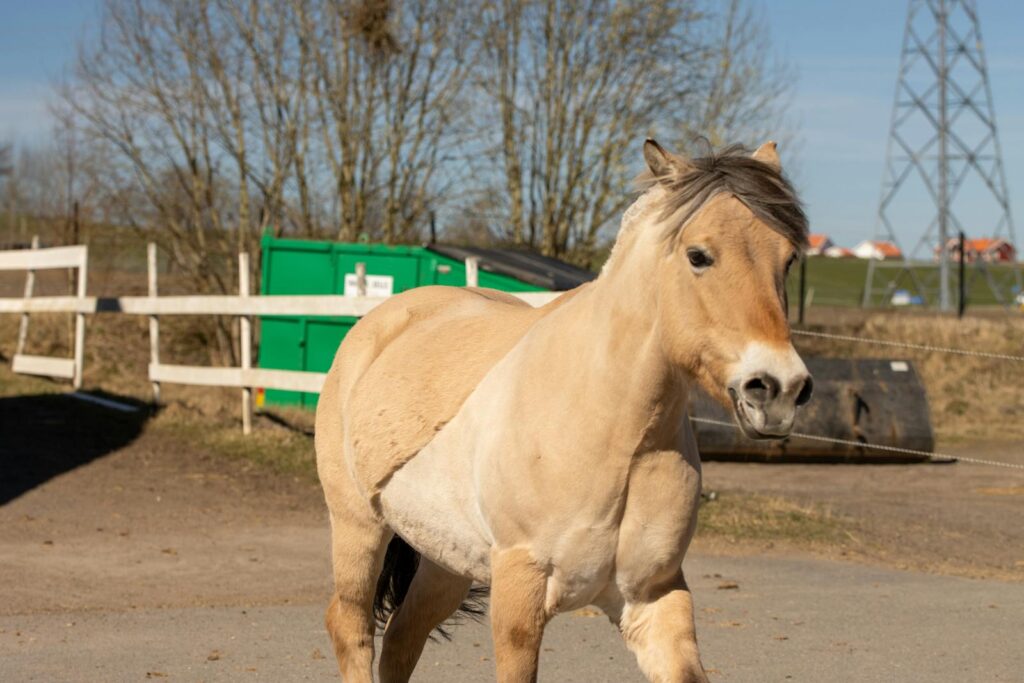
The distinctive Norwegian Fjord horse combines a compact, powerful build with an extraordinarily gentle disposition, making it an exceptional choice for riders with physical disabilities. Standing between 13.2 and 14.2 hands, these horses feature a low center of gravity and broad back that provides excellent stability for riders with balance challenges. Despite their small stature, Fjords possess remarkable strength, easily carrying adult riders while maintaining their characteristically smooth, flowing gaits. Their thick, muscular necks and strong toplines help them maintain balance even with unbalanced riders, reducing the risk of falls. Perhaps most importantly, the breed is renowned for its kind, people-oriented temperament and unflappable nature—Fjords typically remain calm in chaotic environments and demonstrate exceptional patience with riders who require extra time to communicate instructions. The breed’s distinctive dun coloring with a striking dorsal stripe and two-toned mane also tends to delight riders, adding an element of visual interest to the therapeutic experience.
Haflinger: Perfect Size and Willing Attitude

The golden-chestnut Haflinger combines an ideal size for many disabled riders with an exceptionally willing temperament that makes these horses valuable partners in therapeutic settings. Standing between 13.2 and 15 hands, Haflingers offer a comfortable height that facilitates easier mounting while still being substantial enough to carry adult riders comfortably. Their broad, strong backs provide a secure seat for riders with balance issues, while their naturally rhythmic gaits transfer therapeutic movement to the rider without excessive bouncing. Haflingers are known for their intelligent, people-oriented nature and demonstrate remarkable patience with riders who have coordination challenges or who may need multiple attempts to communicate instructions. The breed’s characteristic chestnut coloring with flaxen mane and tail creates an appealing appearance that often helps forge emotional connections with riders. Originally bred as draft horses in the mountainous Austrian-Italian border region, Haflingers possess natural surefootedness and stamina that makes them reliable partners even during longer therapeutic sessions.
Welsh Cob: Adaptable and Strong
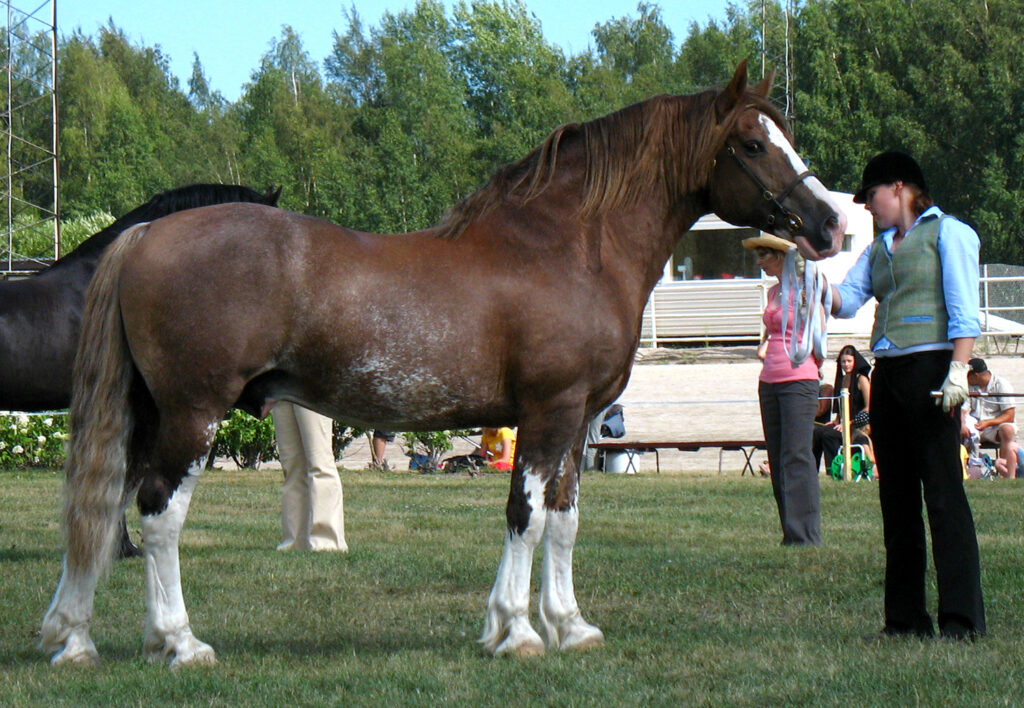
Welsh Cobs (Section D) combine impressive strength with moderate size, creating an excellent option for riders with physical disabilities who need a sturdy yet manageable mount. Standing between 13.2 and 15.2 hands, these hardy ponies possess the substance to carry adults comfortably while remaining shorter than many full-sized horses, making them less intimidating for nervous riders and easier to mount and dismount. Their naturally animated yet smooth gaits provide effective movement therapy while maintaining rider comfort and security. Welsh Cobs are renowned for their exceptional intelligence and adaptability, making them quick to understand the needs of riders with varying abilities and responsive to different communication methods. Their natural hardiness means they rarely develop health issues that might interrupt a therapeutic riding schedule, providing consistency that’s particularly valuable for riders who benefit from regular sessions. The breed’s cheerful disposition and eager-to-please attitude creates a positive riding experience that supports both physical and emotional therapeutic goals.
Morgan Horse: Intelligence and Smooth Movement
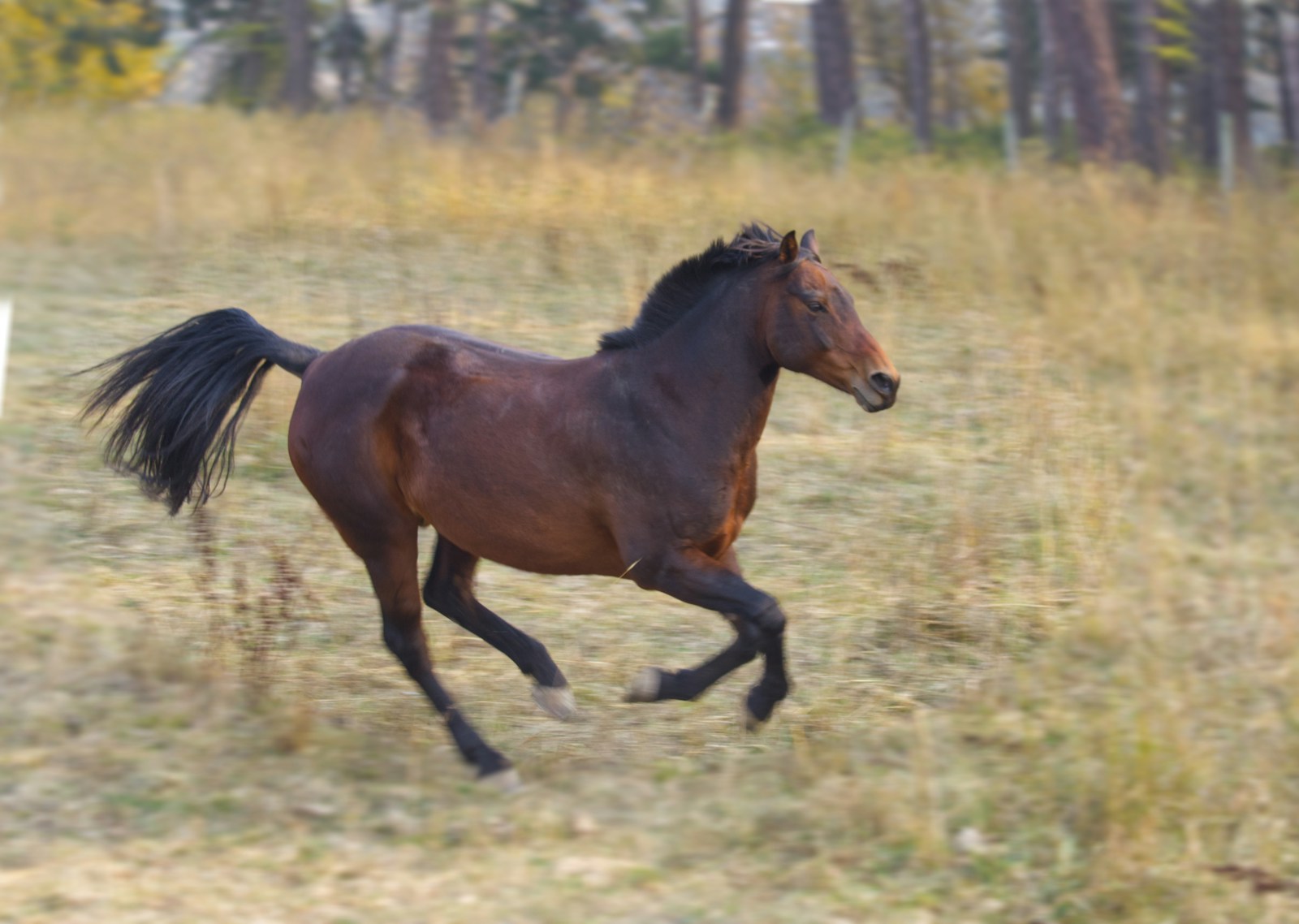
The versatile Morgan horse combines exceptional intelligence with naturally smooth gaits, making it an outstanding choice for riders with physical disabilities who need a responsive yet comfortable mount. Standing typically between 14.1 and 15.2 hands, Morgans offer a moderate size that balances accessibility with the substance needed to carry adult riders securely. Their distinctive conformation includes a short back and powerful hindquarters that help them maintain balance even with riders who may sit unevenly, while their naturally level topline creates a stable platform for those with balance challenges. Morgans are renowned for their willingness to form strong human bonds and their remarkable ability to adapt their energy level to match their rider’s needs and capabilities. Their trademark smooth, ground-covering trot provides excellent movement therapy without jarring sensitive riders—a particular benefit for those with spinal injuries or conditions affecting muscle tone. Additionally, the breed’s legendary intelligence enables them to quickly learn specialized commands or adapt to unusual handling techniques that might be required for riders with limited mobility or communication abilities.
Icelandic Horse: Unique Gaits and Steady Temperament
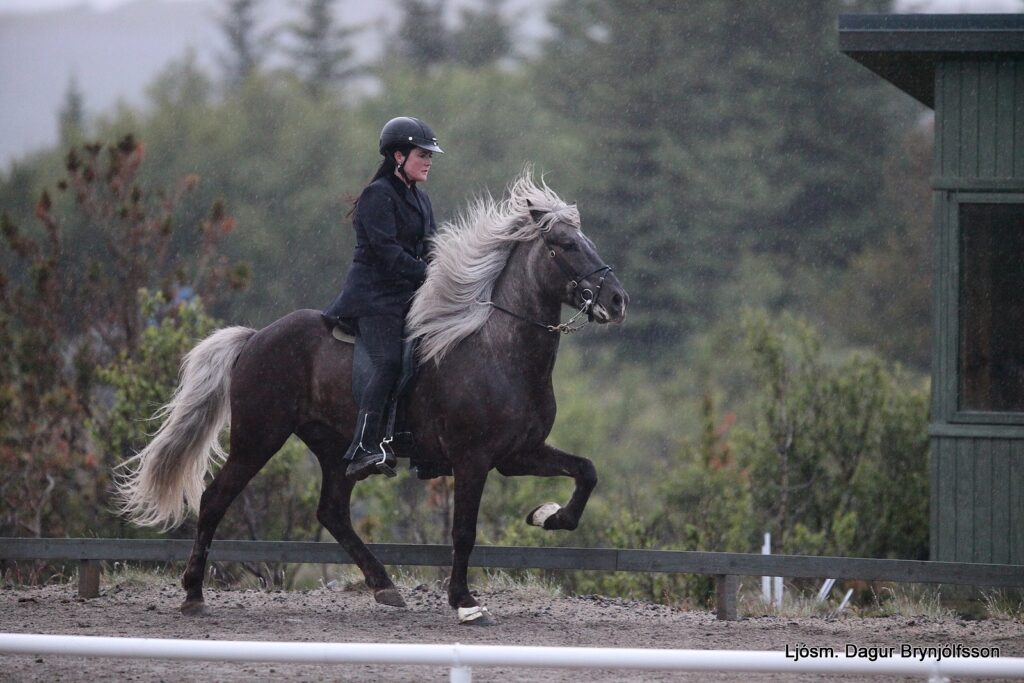
The Icelandic horse offers unique therapeutic benefits through its distinctive five-gait capability, including the remarkably smooth tölt—a four-beat lateral gait that provides rhythmic motion without the jarring bounce of a trot. This specialized gait creates gentle, consistent movement that can be particularly beneficial for riders with mobility impairments, joint sensitivity, or balance issues. Despite their small stature (typically 13-14 hands), these hardy horses possess remarkable strength, easily carrying adult riders while maintaining their smooth, flowing movements. Icelandic horses are known for their level-headed, confident nature—a product of their historical development in Iceland’s harsh environment where spooky horses simply couldn’t survive. Their natural intelligence and willingness to bond with humans make them responsive partners who quickly learn to accommodate riders with special needs. The breed’s thick winter coat and distinctive colorings also provide sensory stimulation for riders with developmental or cognitive disabilities who benefit from tactile experiences during therapy sessions.
Percheron: Gentle Giants for Larger Riders
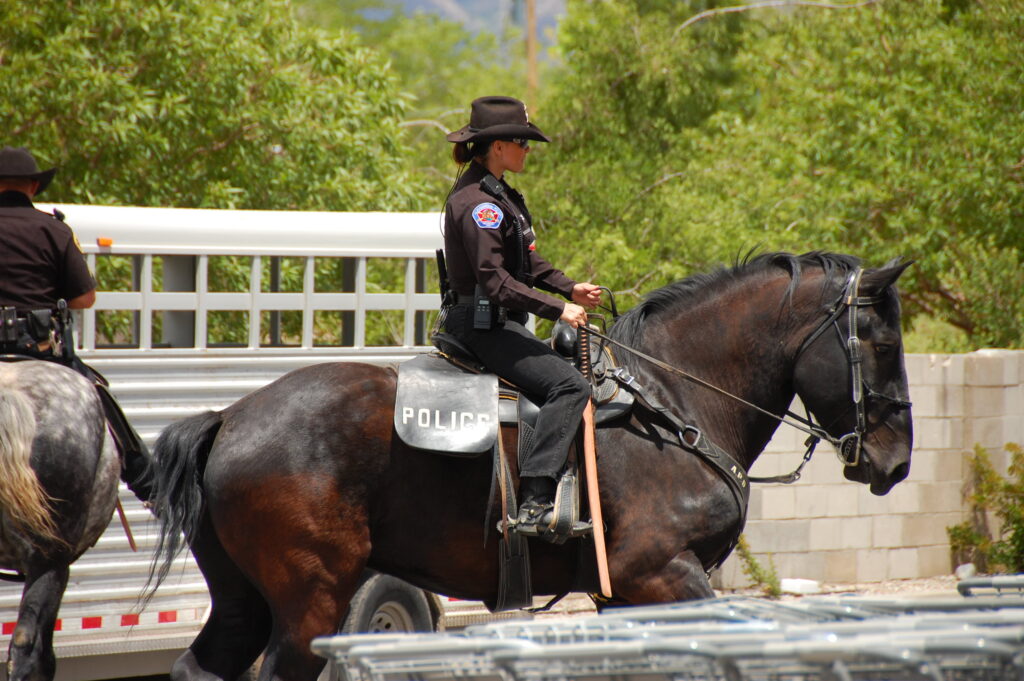
For riders with physical disabilities who require a larger, stronger mount due to their size or specific therapeutic needs, the Percheron offers an exceptional combination of power and gentleness. Though originally bred as war horses and later as draft animals, modern Percherons have developed a reputation for their remarkably docile temperaments despite their imposing size (typically 16-17+ hands). Their broad, stable backs provide excellent security for riders with balance challenges, while their naturally smooth, floating gaits belie their size and offer comfortable movement without excessive jarring. Percherons are known for their patient, unflappable nature—they rarely spook at unexpected stimuli and generally respond calmly to unusual situations that might arise during therapeutic sessions. Their impressive strength means they can easily accommodate specialized adaptive equipment without becoming fatigued, while their natural intelligence allows them to learn modified commands for riders with communication limitations. For therapeutic programs serving adults or larger individuals with physical disabilities, these gentle giants offer a unique combination of power, stability, and extraordinary gentleness.
Paint Horse: Reliable and Visually Engaging

The American Paint Horse combines the reliable temperament of quarter horse lineage with striking coat patterns that create additional therapeutic benefits for riders with various disabilities. Their distinctive coloration often helps forge emotional connections and provides visual stimulation for riders with cognitive or developmental disabilities, while their generally steady nature makes them suitable for physical therapy applications. Paints typically stand between 14 and 16 hands, offering a moderate size that balances accessibility with sufficient substance to carry adult riders comfortably. Their natural athletic ability means they possess balanced, smooth gaits that transfer therapeutic movement to the rider without excessive jarring or bouncing. Like their Quarter Horse relatives, Paints generally exhibit an even temperament that helps them remain calm during unexpected situations—an essential quality when working with riders who may have unpredictable movements or who use adaptive equipment. Their intelligence and trainability allow them to learn specialized cues that accommodate riders with limited mobility or communication abilities, making them versatile partners in diverse therapeutic settings.
Appaloosa: Steady and Patient Partners
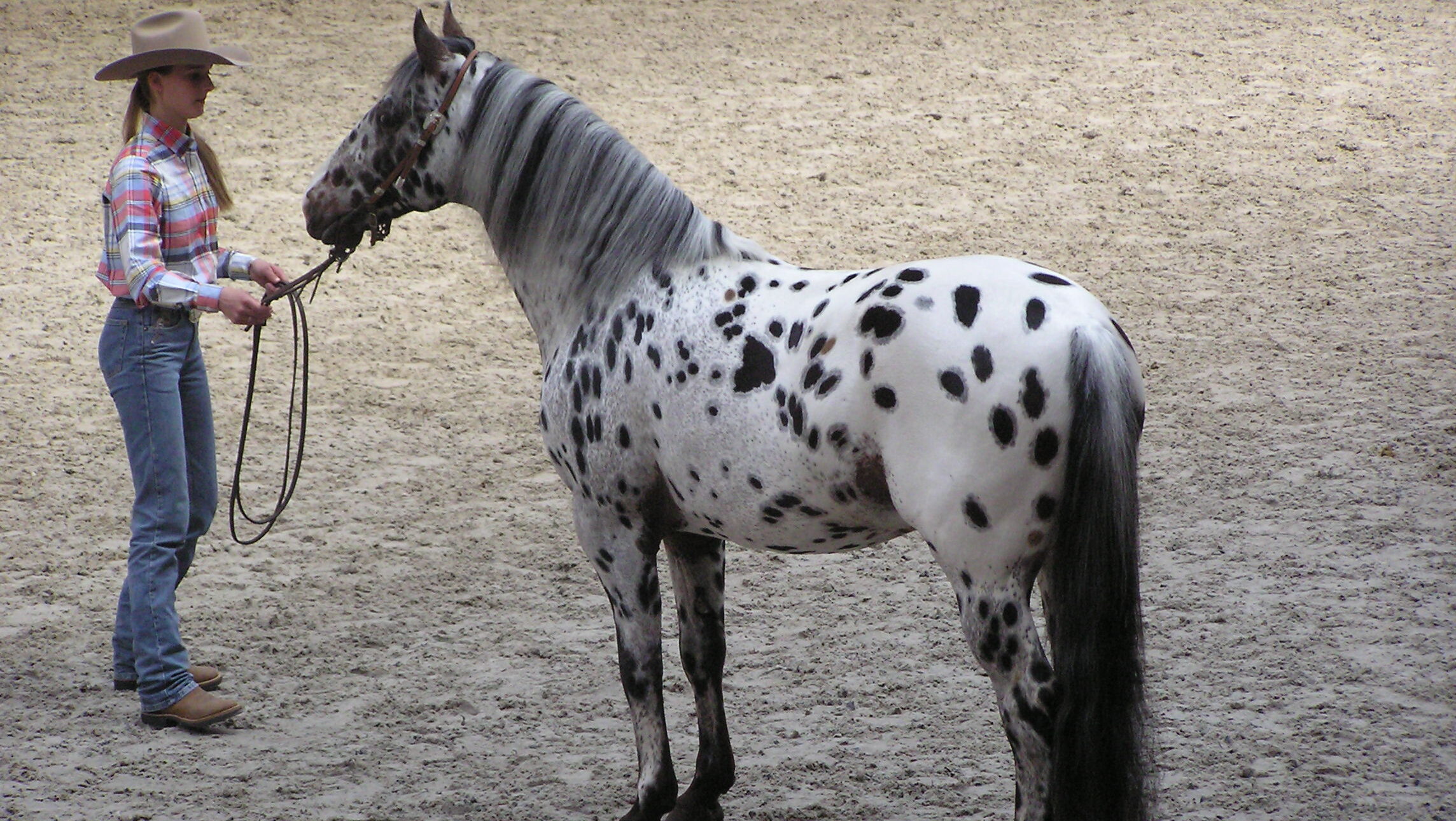
The distinctive Appaloosa combines eye-catching spotted coat patterns with a temperament historically valued for its level-headedness and adaptability, making these horses excellent choices for therapeutic riding programs. Their characteristic spotted coats not only create visual interest but can also serve as conversation starters and confidence builders for riders developing social skills as part of their therapeutic goals. Appaloosas typically stand between 14.2 and 16 hands, offering a comfortable size that balances accessibility with sufficient strength to support riders of various weights. Developed by the Nez Perce tribe who prized horses with steady dispositions, today’s Appaloosas generally maintain that heritage of level-headed reliability that makes them well-suited to unpredictable therapeutic environments. Their naturally athletic build provides balanced movement that transfers effective motion to the rider while maintaining stability, benefiting those with neurological conditions who need rhythmic input for neuromuscular development. The breed’s patient nature makes them particularly valuable for riders who need more time to mount, dismount, or communicate instructions, as they typically remain calm and attentive during these extended interactions.
Gypsy Vanner: Strength and Gentle Disposition
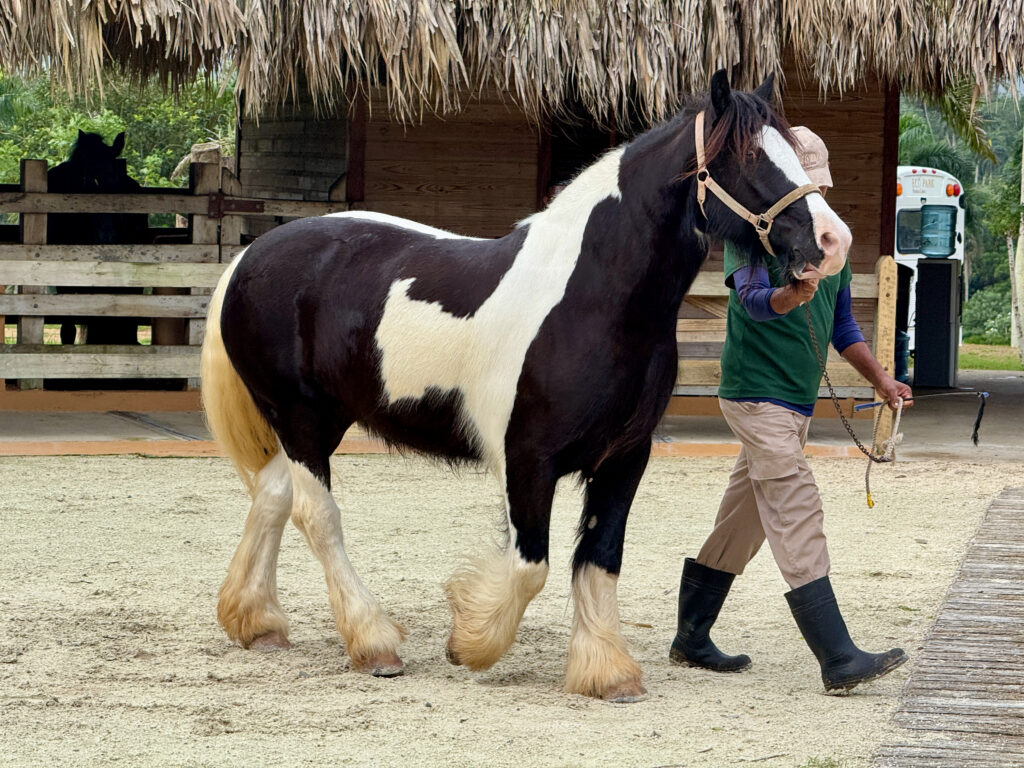
The relatively new Gypsy Vanner breed combines the strength of draft horse heritage with a size and temperament perfectly suited to many therapeutic riding applications. Standing between 13.2 and 15.2 hands, these horses offer substantial carrying capacity in a package that remains accessible for mounting and dismounting by riders with mobility challenges. Their distinctive feathering (long hair on the lower legs) and flowing manes and tails provide excellent sensory stimulation for riders with sensory processing disorders or developmental disabilities who benefit from tactile experiences. Gypsy Vanners are renowned for their exceptionally gentle, people-oriented temperaments—a result of selective breeding by the Romani people who needed horses that could safely interact with children in close quarters. Their broad, strong backs provide excellent stability for riders with balance issues, while their naturally smooth gaits offer comfortable movement therapy without excessive jarring. The breed’s striking appearance, with dramatic black and white piebald or skewbald patterns, often creates immediate emotional connections with riders, supporting the psychological aspects of equine therapy alongside physical benefits.
Considerations for Matching Horse to Rider
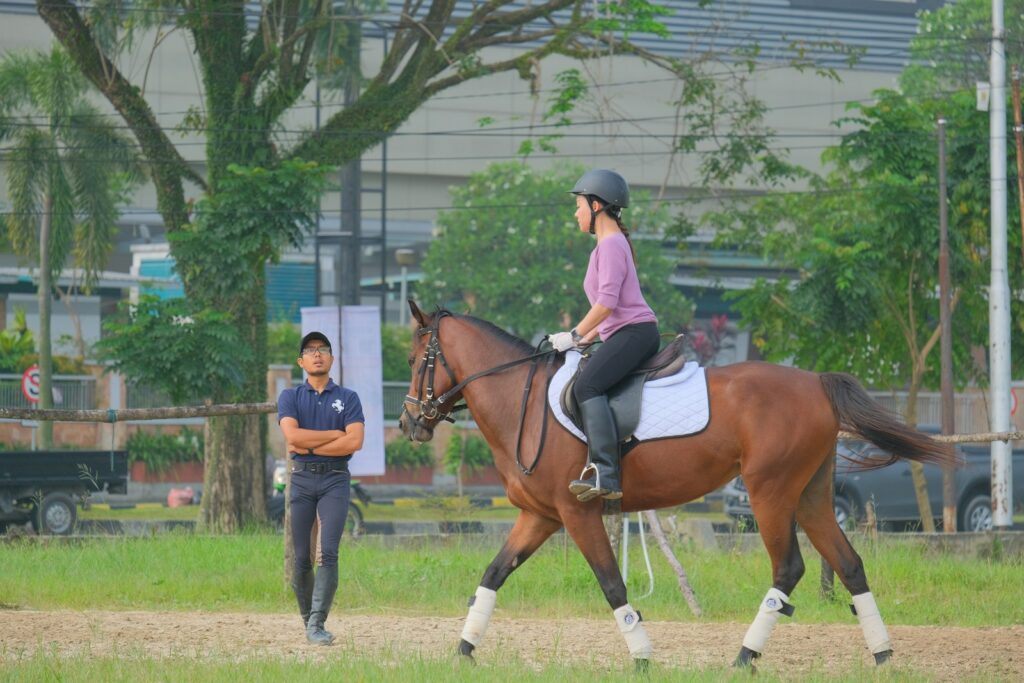
Successfully pairing a horse with a rider who has physical disabilities requires careful consideration beyond breed characteristics alone. Each individual’s specific condition creates unique needs—riders with spasticity may benefit from horses with exceptionally smooth gaits, while those with profound weakness might need particularly patient mounts who will stand quietly during lengthy mounting procedures. The rider’s size and weight relative to the horse’s carrying capacity must be evaluated to ensure the horse can comfortably support them through an entire therapeutic session without fatigue that could compromise safety. Emotional compatibility plays an equally important role, as the psychological benefits of therapeutic riding depend significantly on the bond formed between horse and rider. A professional assessment involving physical therapists, certified therapeutic riding instructors, and experienced equine professionals should guide the matching process, with regular re-evaluations as the rider’s abilities or therapeutic goals evolve. The horse’s training level should match the rider’s needs—some disabilities require horses with specialized training in accommodating adaptive equipment or responding to unconventional aids, while others simply need a reliable, well-schooled mount with excellent ground manners.
Conclusion: Finding the Perfect Equine Partner
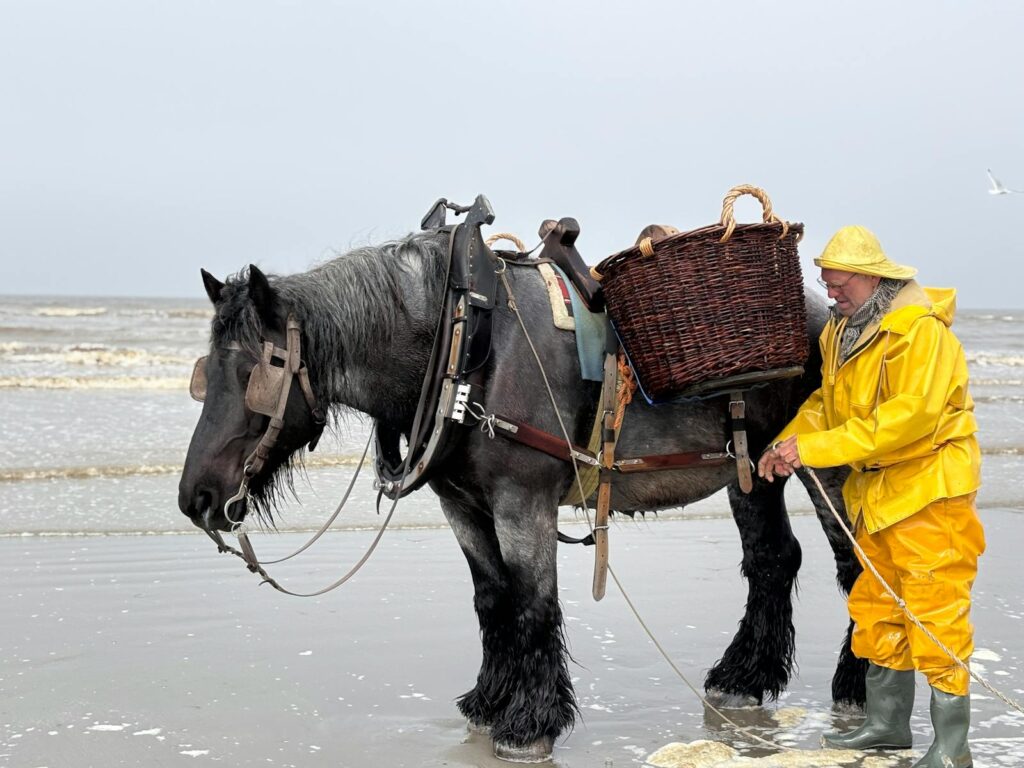
While certain breeds tend to excel in therapeutic riding settings due to their temperament and physical characteristics, the perfect horse for a rider with physical disabilities ultimately transcends breed specifications. The individual horse’s personality, training, and specific attributes must align with the rider’s unique needs, goals, and challenges. Therapeutic riding programs typically evaluate horses through extensive trial periods to ensure they possess the extraordinary patience, gentleness, and adaptability required for this specialized work. For those seeking an equine partner for therapeutic benefits, connecting with certified therapeutic riding instructors, equine-assisted therapy professionals, and organizations like the Professional Association of Therapeutic Horsemanship International (PATH Intl.) can provide invaluable guidance. These experts can help identify suitable horses based on comprehensive assessments of both the individual’s needs and potential equine partners. With the right match, the horse-human partnership can create transformative physical, emotional, and psychological benefits that enhance quality of life and expand possibilities for riders with physical disabilities.




